When keeping chickens or other animals, flies are an expected nuisance, and steps should be taken to reduce the overall fly population to limit the risks they pose to chickens. The key to eliminating a fly problem is maintaining a dry, clean coop and run. Flies thrive in warm, wet, “fragrant” environments and different types of flies require different elimination tactics, making a multi-pronged strategy necessary. So…let’s roll one out!
1. Remove the Poop: Promptly remove nightly droppings from the chicken coop. A droppings board is the best solution to eliminating this stinky fly attractant and it takes less than a minute daily to keep the coop poop-free! A thin layer of Sweet Coop® absorbs any residual moisture on the droppings boards, creating an inhospitable environment for flies and the generation of ammonia!
Sweet Coop® is a phenomenal aid in maintaining a dry, fly-free coop! I use it on my droppings boards every time I clean them to eliminate residual moisture. Bonus: it works as a slow-release fertilizer in the garden after being composted with droppings!
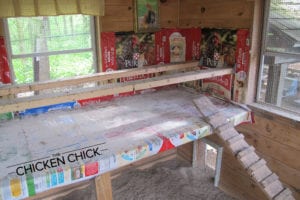
2. Sand for the Driest Coop Possible:
Use sand as chicken coop litter and in the run. The run must be covered. Sand coats droppings and without retaining moisture. Details on how to use sand as litter here.
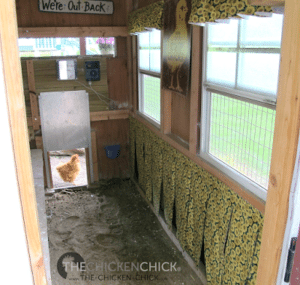
3. Plant Warfare? Can’t hurt, might help
- Grow some carniverous plants that eat flies.
- While planting herbs around the coop makes for lovely landscaping, herbs like lavender, mint and rosemary do not repel flies, mosquitoes, mites or lice.
You can see from these photos that my mint, basil and thyme flourish in my chicken yard- my chickens don’t eat them..
4. Keep Drinkers and Feeders OUT of the Coop: Chicken drinkers and feeders should be kept out of the coop to eliminate the most obvious and avoidable source of moisture from the coop. Chickens don’t drink water while they’re sleeping, so keep it in the covered run during waking hours.
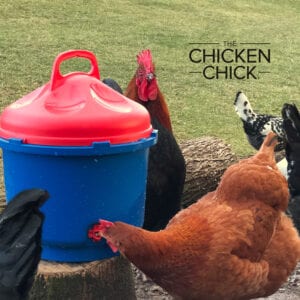
5. Clean Up After Snack Time: If giving chickens fruit treats, promptly clean up remnants before the flies find them. Limit treats to a maximum of 2 tablespoons per bird occasionally to avoid diluting the nutrients in their feed and prevent obesity. Better yet, skip treats entirely, they don’t benefit chickens who are fed a nutritionally complete feed, and create nutrient imbalance in the diet!
6. No Pooling Water: Eliminate stagnant, pooling water, which can be a breeding grounds for flies. Install drainage where necessary.
7. Employ Helper Insects: Fly Predators are tiny, non-stinging wasps that eat fly larva so they have no chance of hatching & becoming adult pests. The challenge with Fly Predators is that chickens love eating them, so they must be strategically placed.
8. Compost manure vertically instead of horizontally in a wide pile. This increases the compost temperature, expedites decomposition and minimizes the amount of surface area exposed and fly-attracting odors.
9. Dial up Compost Temperature: Cover compost with black plastic sheeting to increase the temperature inside the pile. Flies warm temperatures, not hot. Turning the pile also keeps the pile cooking because the process requires oxygen.
10. Relocate the Compost Pile: Locate compost pile as far away from the chicken coop and chicken yard as practical.
11. Keep It Moving: Install fans to promote airflow inside the coop. Air turbulence makes flying difficult!
12. Eliminate Straw: Avoid the use of straw with chickens. Straw is not absorbent and when it gets wet from droppings, drinking water, etc., it begins to decompose, creating a fly attractant. Learn more about what makes straw inappropriate for use in coops here.
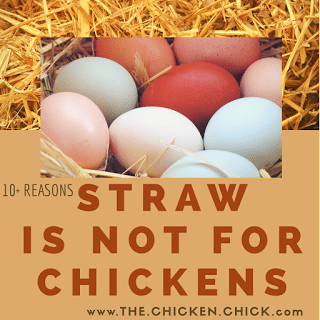
13. Vanilla scented air fresheners. Some chicken-keepers swear by them. They can’t hurt and might help. Read more about using them here.
14. Fly traps. Each type of physical fly trap has its drawbacks: some are stinky, nasty to look at and some are costly, but most are effective to varying degrees. The type of inexpensive, disposable trap shown below should be hung no higher than four feet from the ground. They’re stinky, but they work. Never use hanging sticky fly strips with chickens– they inevitably manage to become tangled in feathers!
- The Epps Biting Fly Trap attracts flies that bonk into the unit, fall into soapy water and drown. My neighbor has been using hers for years and can’t say enough good things about it. A visit to her chickens and horses is remarkably fly-free. You can see my neighbor’s Epps unit in this photo behind Scooby, the white horse enjoying a dust bath.
15. Spinosad the Coop
My treatment of choice for flies, lice and mites is poultry veterinarian recommended Elector® PSP (the active ingredient is Spinosad). “Spinosad (fermentation product of Saccharopolyspora (a type of bacteria). Single use controls all stages of mites. Also kills flies, beetles, agricultural insect pests. Can be used directly on laying hens and to spray buildings.” Elector PSP has no withdrawal period and can be used safely on and around chickens inside the coop. Spray in a clean coop at the rate of 1 ounce per 5 gallons of water. To purchase single use bottles and to learn more about the use of Elector PSP, click here.
Kathy Shea Mormino
Affectionately known internationally as The Chicken Chick®, Kathy Shea Mormino shares a fun-loving, informative style to raising backyard chickens. …Read on


shop my SPONSORS
When keeping chickens or other animals, flies are an expected nuisance, and steps should be taken to reduce the overall fly population to limit the risks they pose to chickens. The key to eliminating a fly problem is maintaining a dry, clean coop and run. Flies thrive in warm, wet, “fragrant” environments and different types of flies require different elimination tactics, making a multi-pronged strategy necessary. So…let’s roll one out!
1. Remove the Poop: Promptly remove nightly droppings from the chicken coop. A droppings board is the best solution to eliminating this stinky fly attractant and it takes less than a minute daily to keep the coop poop-free! A thin layer of Sweet Coop® absorbs any residual moisture on the droppings boards, creating an inhospitable environment for flies and the generation of ammonia!
Sweet Coop® is a phenomenal aid in maintaining a dry, fly-free coop! I use it on my droppings boards every time I clean them to eliminate residual moisture. Bonus: it works as a slow-release fertilizer in the garden after being composted with droppings!

2. Sand for the Driest Coop Possible:
Use sand as chicken coop litter and in the run. The run must be covered. Sand coats droppings and without retaining moisture. Details on how to use sand as litter here.

3. Plant Warfare? Can’t hurt, might help
- Grow some carniverous plants that eat flies.
- While planting herbs around the coop makes for lovely landscaping, herbs like lavender, mint and rosemary do not repel flies, mosquitoes, mites or lice.
You can see from these photos that my mint, basil and thyme flourish in my chicken yard- my chickens don’t eat them..
4. Keep Drinkers and Feeders OUT of the Coop: Chicken drinkers and feeders should be kept out of the coop to eliminate the most obvious and avoidable source of moisture from the coop. Chickens don’t drink water while they’re sleeping, so keep it in the covered run during waking hours.

5. Clean Up After Snack Time: If giving chickens fruit treats, promptly clean up remnants before the flies find them. Limit treats to a maximum of 2 tablespoons per bird occasionally to avoid diluting the nutrients in their feed and prevent obesity. Better yet, skip treats entirely, they don’t benefit chickens who are fed a nutritionally complete feed, and create nutrient imbalance in the diet!
6. No Pooling Water: Eliminate stagnant, pooling water, which can be a breeding grounds for flies. Install drainage where necessary.
7. Employ Helper Insects: Fly Predators are tiny, non-stinging wasps that eat fly larva so they have no chance of hatching & becoming adult pests. The challenge with Fly Predators is that chickens love eating them, so they must be strategically placed.
8. Compost manure vertically instead of horizontally in a wide pile. This increases the compost temperature, expedites decomposition and minimizes the amount of surface area exposed and fly-attracting odors.
9. Dial up Compost Temperature: Cover compost with black plastic sheeting to increase the temperature inside the pile. Flies warm temperatures, not hot. Turning the pile also keeps the pile cooking because the process requires oxygen.
10. Relocate the Compost Pile: Locate compost pile as far away from the chicken coop and chicken yard as practical.
11. Keep It Moving: Install fans to promote airflow inside the coop. Air turbulence makes flying difficult!
12. Eliminate Straw: Avoid the use of straw with chickens. Straw is not absorbent and when it gets wet from droppings, drinking water, etc., it begins to decompose, creating a fly attractant. Learn more about what makes straw inappropriate for use in coops here.

13. Vanilla scented air fresheners. Some chicken-keepers swear by them. They can’t hurt and might help. Read more about using them here.
14. Fly traps. Each type of physical fly trap has its drawbacks: some are stinky, nasty to look at and some are costly, but most are effective to varying degrees. The type of inexpensive, disposable trap shown below should be hung no higher than four feet from the ground. They’re stinky, but they work. Never use hanging sticky fly strips with chickens– they inevitably manage to become tangled in feathers!
- The Epps Biting Fly Trap attracts flies that bonk into the unit, fall into soapy water and drown. My neighbor has been using hers for years and can’t say enough good things about it. A visit to her chickens and horses is remarkably fly-free. You can see my neighbor’s Epps unit in this photo behind Scooby, the white horse enjoying a dust bath.
15. Spinosad the Coop
My treatment of choice for flies, lice and mites is poultry veterinarian recommended Elector® PSP (the active ingredient is Spinosad). “Spinosad (fermentation product of Saccharopolyspora (a type of bacteria). Single use controls all stages of mites. Also kills flies, beetles, agricultural insect pests. Can be used directly on laying hens and to spray buildings.” Elector PSP has no withdrawal period and can be used safely on and around chickens inside the coop. Spray in a clean coop at the rate of 1 ounce per 5 gallons of water. To purchase single use bottles and to learn more about the use of Elector PSP, click here.





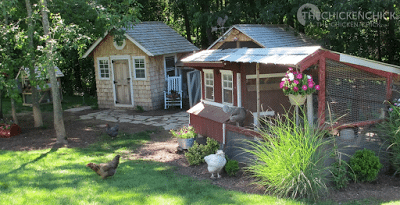
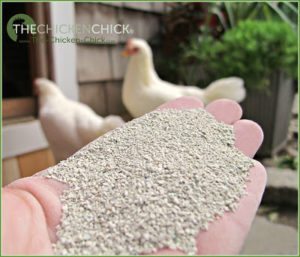
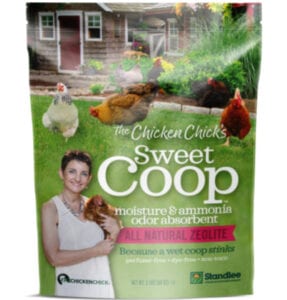
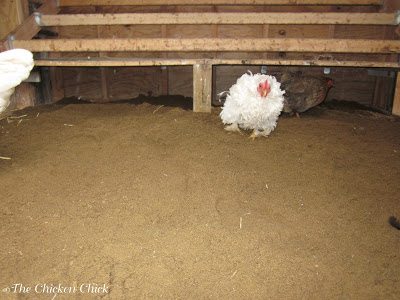
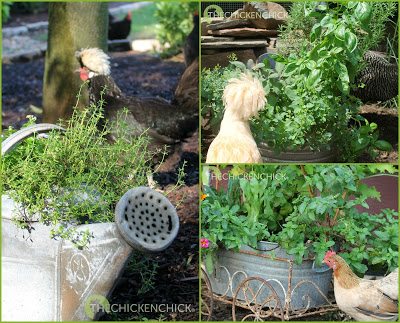

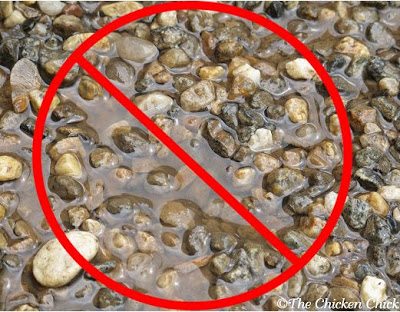
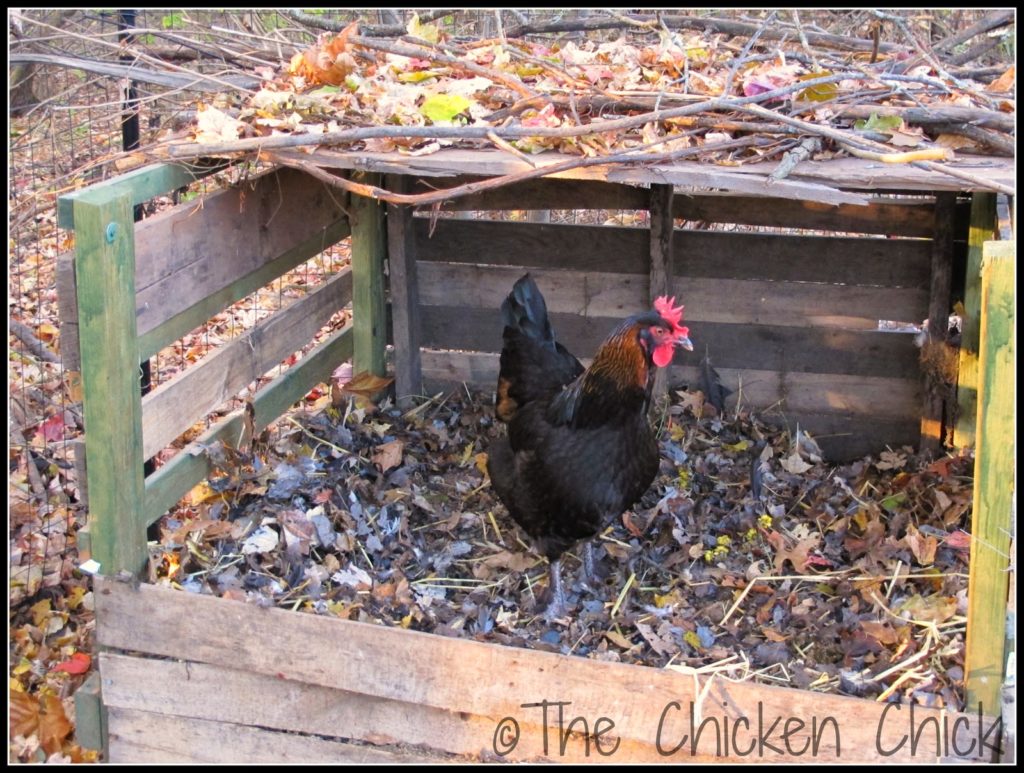
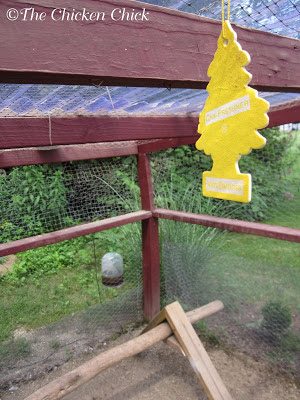

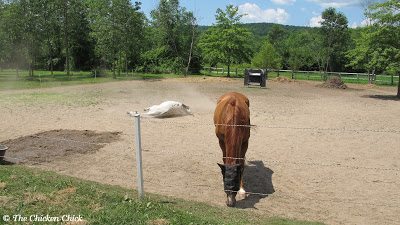
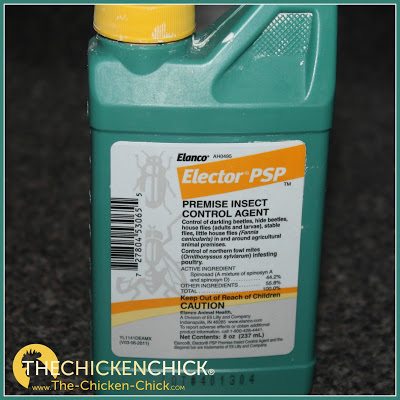


















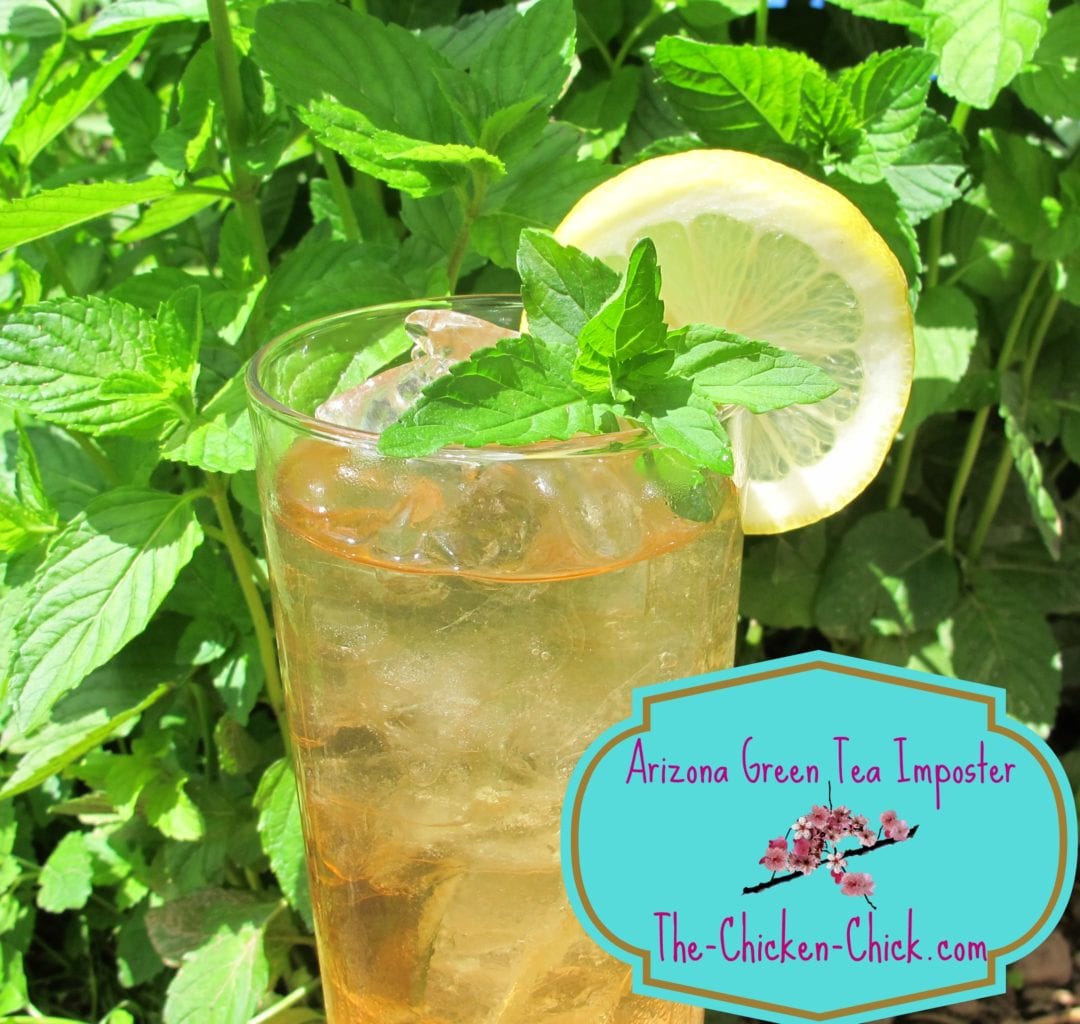
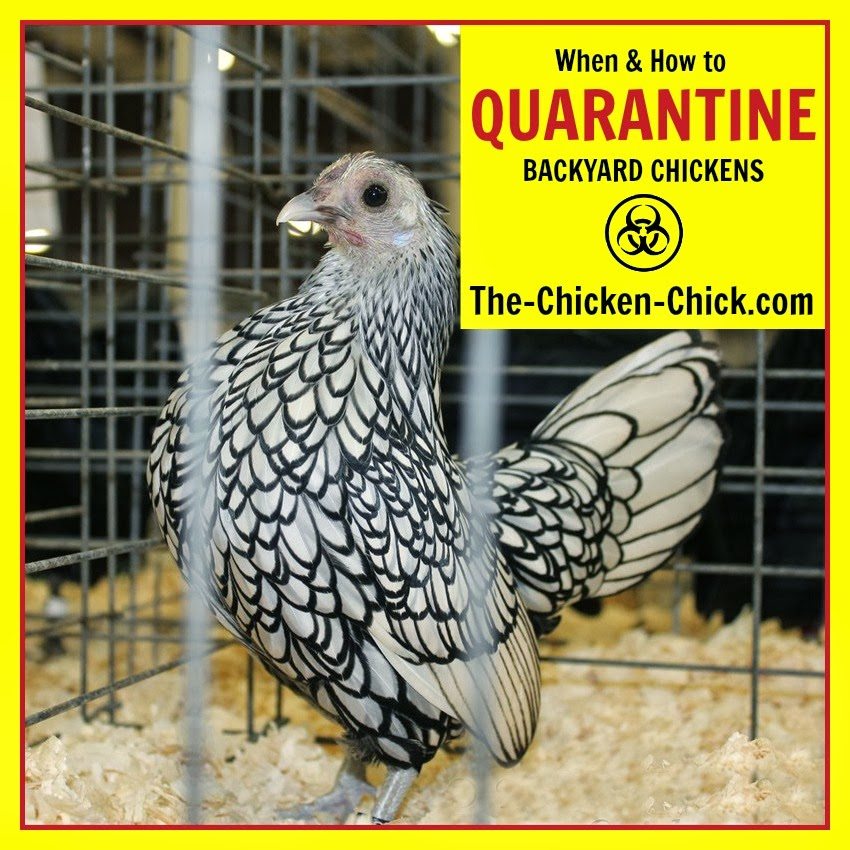















I have been using Fly predators for years. The one thing I do is to spread them in the evening after the chickens are “sleeping” that way the predators have a chance to settle in . I have horses and burros as well as chickens, so I have to stay on top of it. High quality bug zappers work well too. The ones I have had the more success with is a double sided rectangle style. I leave them on 24/7 in the barn. they zap all day and all night. moths, mosquitos and flies.
Chickens find fly predators delicious! Placement is key. :)
Really enjoyed this blog I have no issues with flies with the hen but I sure do with the sheep! Just got my first shipment of Fly Predators and have been using traps for years.
Elector PSP is what we use.
The Vanilla scented air fresheners really work for us! No flies around and the coop smells nice!